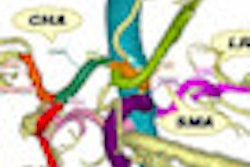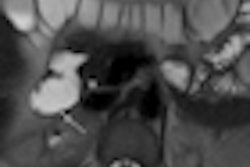
NEW YORK (Reuters Health) - Aortic root dilation is uncommon in highly trained competitive athletes and is not likely to be caused by exercise training. Consequently, aortic root dilation in this population is probably pathologic and shouldn't be dismissed, according to findings published in the August 17 online issue of Circulation.
Although enlargement of the aortic root may be expected to occur in response to the hemodynamic overload encountered in intense athletic training, the researchers explain, few studies have investigated the impact of exercise training on aortic root dimension.
Dr. Antonio Pelliccia from the Institute of Sports Medicine and Science, Italian National Olympic Committee, Rome, and colleagues investigated the upper normal limits of aortic remodeling associated with intense and chronic athletic training in 2317 athletes, 659 (28%) of whom were considered elite by virtue of their participation in the Olympic Games and/or World Championships.
Mean aortic root transverse dimension was 32.2 mm in male athletes, with 99th percentile of 40 mm. In females, the mean aortic root dimension was 27.5 mm, with 99th percentile of 34 mm.
Aortic root was 40 mm or larger in 17 (1.3%) male athletes, and it was 34 mm or larger in 10 (0.9%) female athletes.
Sex, age, height, weight, and left ventricular mass accounted for more than 60% of the variability in aortic size, whereas participation in such sports as cycling, swimming, water polo, and basketball had a smaller impact on the variability.
The 17 male athletes with aortic root enlargement had substantial height and body surface area and competed most commonly in rowing, canoeing, basketball, and volleyball.
Among the 15 male athletes who had serial evaluations with echocardiography, mean aortic root dimensions increased significantly from 40.9 mm to 42.9 mm over time, but none experienced cardiac symptoms or had cardiovascular events.
During 15 to 17 years of follow-up, three of these athletes showed substantial aortic root dilation -- from 40 to 50 mm, from 42 to 50 mm, and from 43 to 48 mm. None developed significant aortic regurgitation, and no decisions have been made regarding prophylactic surgical intervention in any of these individuals.
None of the 10 female athletes with enlarged aortic root had significant enlargement during follow-up ranging from one to 17 years.
Among 115 control athletes randomly selected from those with normal baseline aortic root dimensions, aortic root dimension increased by 2% in male athletes during three to 16 years of follow-up but did not change in female athletes during two to 18 years of follow-up.
"The clear inference of these data is the principle that an aortic root dimension of 40 mm or more in conditioned male athletes (34 mm or more in female athletes) is unlikely to represent the physiological consequence of exercise training and is more likely an expression of a pathological condition, mandating close clinical surveillance," the researchers conclude.
Last Updated: 2010-09-09 13:28:01 -0400 (Reuters Health)
Source: http://link.reuters.com/pyq52p
Circulation 2010;122:698-706.
Related Reading
MRI 'more robust' for assessing aortic root in connective tissue disorders, March 1, 2004
Copyright © 2010 Reuters Limited. All rights reserved. Republication or redistribution of Reuters content, including by framing or similar means, is expressly prohibited without the prior written consent of Reuters. Reuters shall not be liable for any errors or delays in the content, or for any actions taken in reliance thereon. Reuters and the Reuters sphere logo are registered trademarks and trademarks of the Reuters group of companies around the world.


















